ROYAL
NAVY PATTERN 20 BINNACLE BOAT COMPASS
BY FAMOUS BRITISH ROYAL NAVY MAKER DENT & Co.
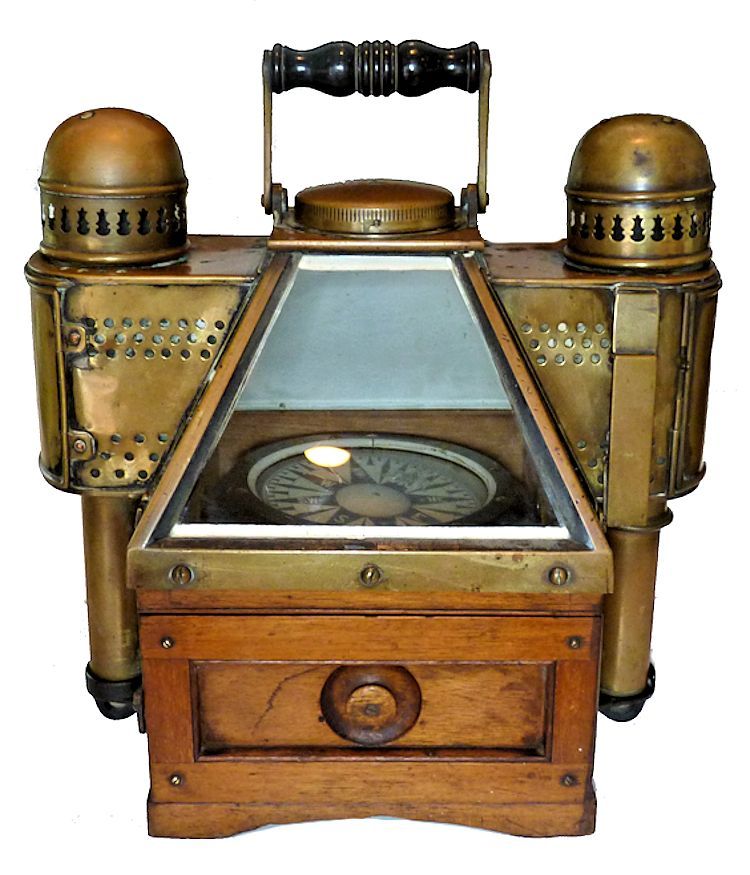 GUARANTEED ALL ORIGINAL
GUARANTEED ALL ORIGINAL
An exceedingly rare wood cased binnacle compass designed like a pyramid?
This is the first completely original Dent Boat Binnacle, Pattern 20, to be offered for sale in recent times. Most are only
seen in museums or books.
DIMENSIONS: 13 1/2″W x 14 1/4″H x 8 3/4″D
WEIGHT 29 Pounds
Presented is one of the rarest
and handsomest wood cased binnacle compasses ever offered for sale with a weight of 29 pounds. which is packed in a small
size package. Its pyramid design by E.J. Dent dates back to sometime before 1862. And the Patt 20 number
on the back of the wood case with the Broad Arrow mark along side signifies this is one of the original binnacles made after
Dent won the Royal Navy competition. Dent was mainly known for his work in time pieces and chronometers in determining longitude,
but the company also invented the liquid compass in 1853, which became the standard for the Royal Navy and the Royal
National Lifeboat Institution. In 1859, “Big Ben”, the giant clock of Dent’s manufacture was put in
service at the Houses of Parliament. The Dent company continues in business today as a maker of watches.
CHRONOLOGY: In 1890, four compass makers, consisting of Lilley, Reynolds, Hughes, and Dent
were invited by the Admiralty to compete in the design of a new compass that would be suitable for steamboats as well as sailboats
and pulling boats. They were to be liquid filled, and it was specified that candles be used for lighting rather than oil lamps
since this had proved to be better when used on the newly developed torpedo craft of that early age. At this time, Dent had been making compasses for the Royal Navy for over 50 years,
and won the competition on all counts. Its compass was introduced as Pattern 20 in 1892. In 1907, the number was changed to
Pattern 182. It remained in service until the end of WW I. This
example still has molten candle wax in one of its Candle Towers.
PROVENANCE: From the private collection of a well known dealer and collector of nautical antiques deceased
and then handed down in his family since 1982
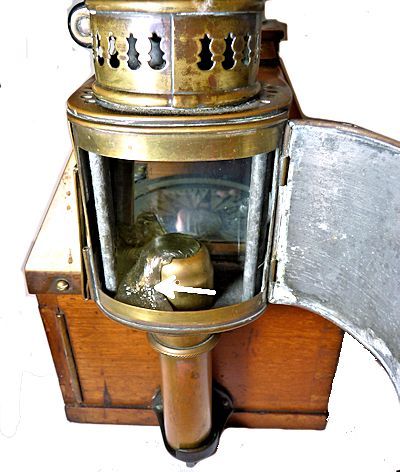
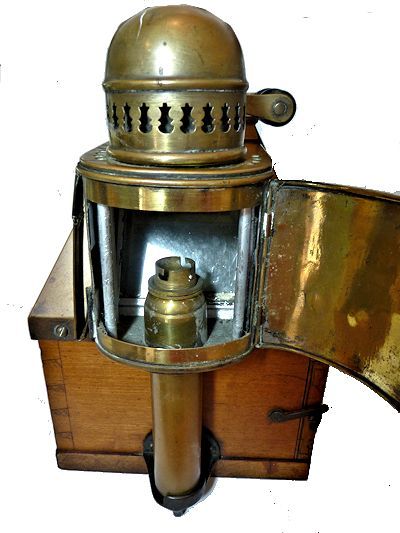
This example of a Pattern 20 later changed to Patt 182 pyramid
binnacle compass, and its twin lamps is of museum quality, a term we don’t use lightly. It shows only
superficial wear and minor dents and a naturally aged patina for its 120 plus years of age. It is all
original.
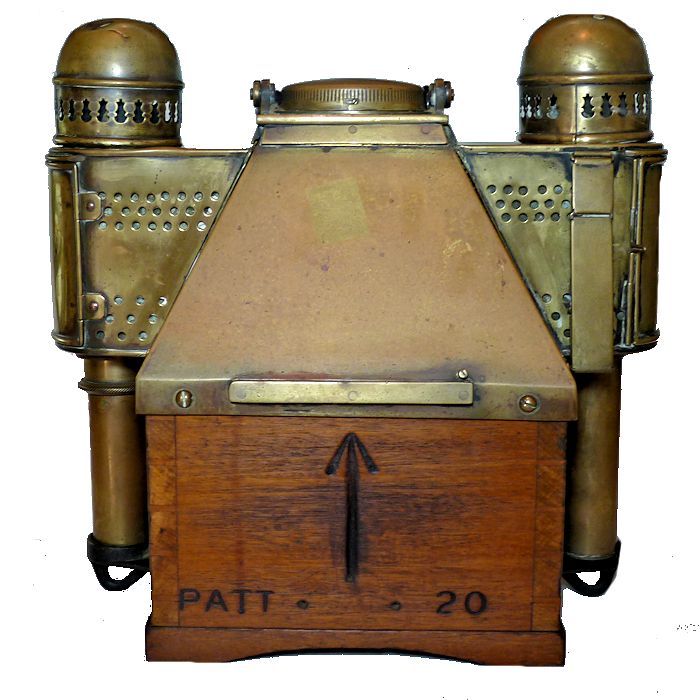
The Patt. 20 mark is on the 1st series of these binnacles issued. The Broad Arrow shows serviceto the Crown.
THE CASE has a brass hood with a front glazed slanted large beveled glass front port. On the other
two sides are slanted panels with a smaller window against which the elegant lamp which contains the candle holder is
mounted on the left side. Molten wax is found in the chamber, proof of its originality. Across from it is a duplicate which
contains a holder with a receptacle for a small 12 volt bulb. The back panel is solid brass. The top of the
binnacle is equipped with a thick folding wood and brass bail holding a Bakelite handle of a round glass viewing port covered
by a brass cap. The base has a wood door which opens to expose a lock for the gimbals, and a brass tube which likely
held a Findler’s bar. Inside the door is pasted a label with details of the compass and binnacle. All together, it is an impressive example of an important small Royal Navy binnacle
that is of the highest grade, and all original.
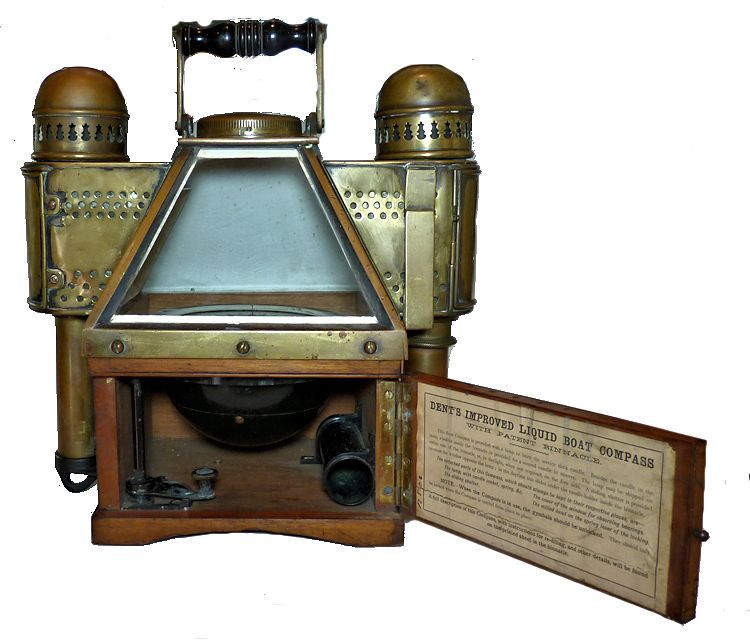
To the left a lever that locks the gimbals. To the right an extra candle holder, then the maker’s
label on the door and below. THE
CARD has North marked by an elaborate Fleur de les as the pointer.
As in most early cards, no degrees are present. Degrees were added to compass cards shortly after the Turn of the
20th Century. The compass rose shows the eight cardinal points and is further divided to 1/16 points and then to 32. Each
point is 11 1/4 degrees. The compass measures 6 3/6 inches in diameter. The chamber
is clear of sediment and bubbles. The
name, Dent & Co., is engraved on the card, and the upper brass bezel of the compass is marked No 5242
which is the serial number of the compass and No. 3016 which is the number of the binnacle. The binnacle number appears
on the cap at the top of the binnacle with Patt 20. And
there is a Broad Arrow Mark.The cap fits over the glass port.
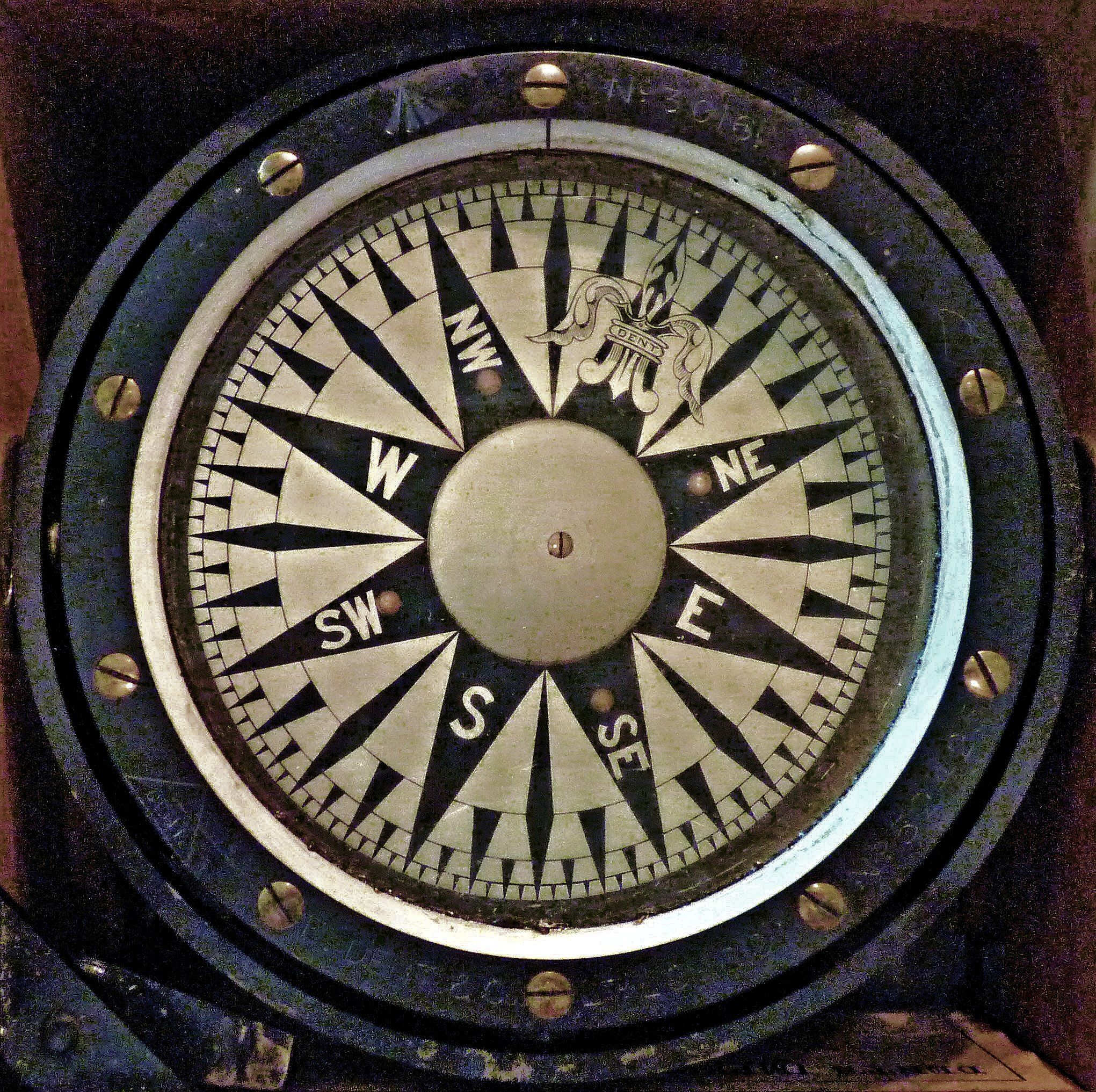 A 19th Century compasscard measured in points of 11 1/4 degees
A 19th Century compasscard measured in points of 11 1/4 degees
This very handsome
vintage compass with the rare early style wood dovetailed wood case with twin towers holding a candle burner
and 12 volt lamp is original throughout.
DIMENSIONS:Diameter of bowl 5 1/8″
Diameter of card 4 1/2″ Base 8 3/4″ Square
Height 15″ with handle raised WEIGHT 29 pounds
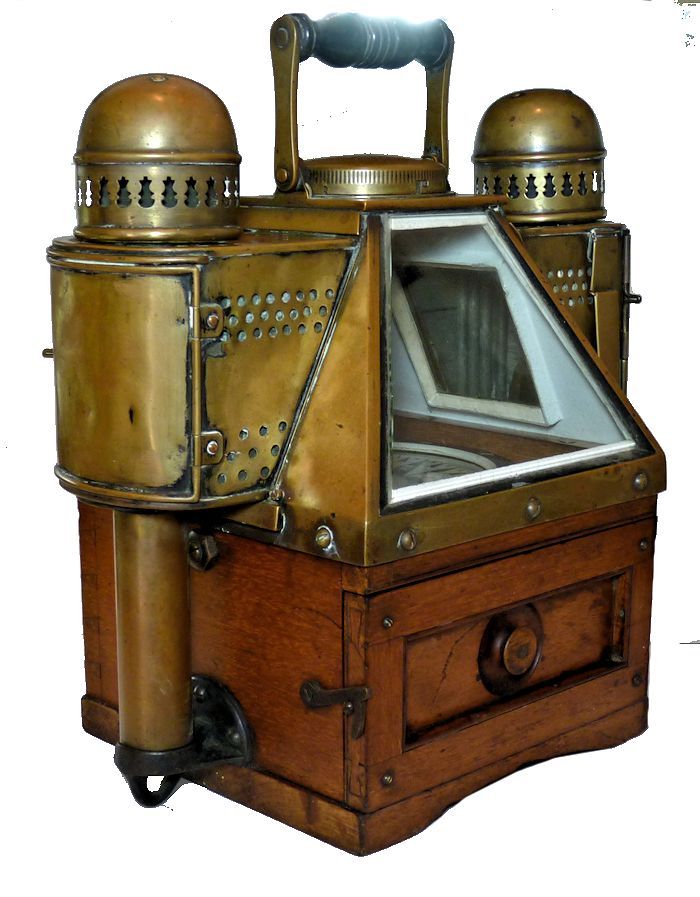 As seen from the right side on an angle
As seen from the right side on an angle
DENT’S BRIEF HISTORY:
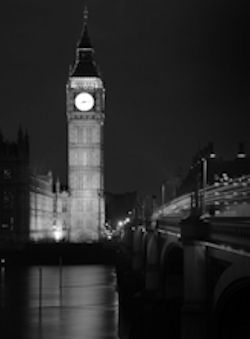
The history of
the Victorian fervor for technological innovation and created precision chronometers to navigate the Royal Navy and guide embraced
some of the most intrepid explorers on their voyages. The British Empire was in full expansion and its maritime tradition
had produced some remarkable technological breakthroughs from the late 18th century; John Harrison’s triumphant mechanical
solution in 1764 to locate a ship’s position at sea won the coveted Board of Longitudes prize money and further consolidated
Britain as the horological force in the world. Propelling the impetus of Britain’s primacy, Dent proved a
key player in Victorian horological history manufacturing the Standard Clock at the Royal Observatory, Greenwich which was
to keep “Greenwich Mean Time” the time to which all others in the Empire were referred, (better known today
as G.M.T.) and continued to do so until replaced by an electronic clock in 1946. Dent also made probably the most famous
clock in the world – the Great Clock for the Houses of Parliament, familiarly known as Big Ben.
